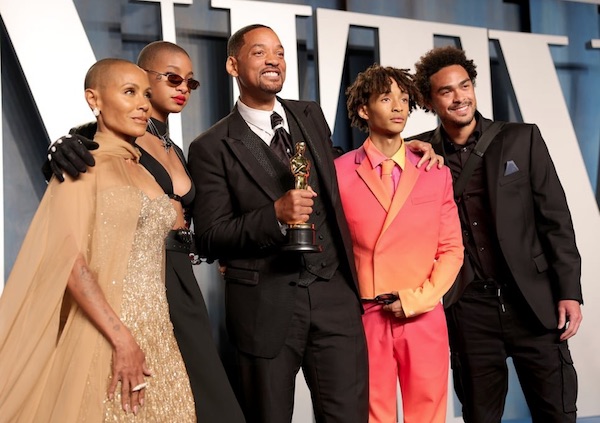Entertainment
JURASSIC QUEST, NORTH AMERICA’S BIGGEST DINOSAUR EVENT, MIGRATES TO RED DEER – TICKETS ON SALE NOW

Walk among the dinosaurs when the continent’s can’t-miss dinosaur adventure stomps into Westerner Park June 3-5
The largest and most realistic dinosaur exhibit in North America is BACK, BIGGER and BETTER than EVER! Our herd of photorealistic dinosaurs is ready to delight Red Deer area families when Jurassic Quest® arrives at Westerner Park for three days only June 3-5.
Jurassic Quest will visit Canada for the first time since 2019 with its most beloved and unique experiences for the whole family including life-like dinosaurs, dinosaur rides, live dinosaur shows, interactive science and art activities, bounce houses, inflatable attractions and more. In addition to new dinos in the herd, new activities for 2022 include the “Triceratots” soft play area for our littlest explorers.
New for 2022, join us for The Quest, our official educational and entertaining journey through the Jurassic. The Quest is an interactive adventure where guests will meet dinos and prehistoric sea creatures, take a unique Dino Snap, search for fossils, watch a live Raptor Training Experience and more. Follow the ten clues to the “Quest Spot” signs and collect a prize at the end. The Quest is included with general admission.
Families can walk through the Triassic, Jurassic and Cretaceous periods to see the dinos that ruled on land, and “deep dive” into the “Ancient Oceans” exhibit, making its Canadian debut, to come face to face with the largest apex predator that ever existed – a moving, life-size, 15-metre-long megalodon! Meet the babies, hatched only at Jurassic Quest: Cammie the Camarasaurus, Tyson the T. rex and Trixie the Triceratops – and, you may even catch one of our star dino trainers: Safari Sarah, Dino Dustin, Captain Caleb, Prehistoric Nick or Park Ranger Marty!
Loved by millions, only Jurassic Quest can bring families memories this BIG! The Jurassic Quest herd of animatronic dinos – from the largest predators to playful baby dinos – are displayed in realistic scenes with some that move and roar, allowing guests to experience them as they were when they roamed the earth millions of years ago. Jurassic Quest works in collaboration with leading paleontologists to ensure each dinosaur is painstakingly replicated in every detail, from coloration to teeth size, to textured skin or feathers, drawing on the latest research about how we understand dinosaurs and ancient giants of the sea looked and moved.
TICKETS & LOGISTICS
Tickets are available online at www.jurassicquest.ca or on-site. Tickets are for a timed arrival window, and advance ticket purchase is strongly encouraged. Guests can walk through the dinosaur experience at their own pace, and strollers are permitted. Some venues may have wheelchairs for use, but please contact the venue in advance to make arrangements.
Event: Jurassic Quest in Red Deer
Place: Westerner Park, 4847A 19 St, Red Deer, AB T4R 2N7, Canada
Date: June 3-5
Time: Friday 9am-8pm, Saturday 9am-8pm, Sunday 9am-6pm
Tix & Info: https://www.jurassicquest.com/
KIDS & ADULTS: $27.50
SENIORS: $22
KIDS UNLIMITED RIDES (INCLUDES ENTRY): $45 for all-you-can-ride access to dinosaur rides, inflatables and fossil dig.
General admission tickets include access to the dinosaur and marine exhibits, arts and crafts activities, and dinosaur shows. There are rides and activities that require activity tickets available on site, or guests can upgrade to the Kids Unlimited Rides ticket (the best value for children ages 2-12). Entry is free for children under age 2.

ABOUT JURASSIC QUEST
Since 2013, Jurassic Quest has been touring epic dinosaur experiences treating millions of people across North America to an as-close-as-you-can-get look at the giants that ruled the Earth and sea millions of years ago. Jurassic Quest is the largest and most realistic dinosaur exhibition in North America. Developed with leading paleontologists, each dinosaur has been painstakingly replicated in every detail including the most realistic likenesses, movement and sound. Whether their prehistoric counterpart had skin that was scaly, or covered with feathers, Jurassic Quest has spared no expense in bringing the dinosaurs to life. Jurassic Quest produced 96 multi-day events in 34 states and Canada and sold over one million tickets in 2019, and has hosted over 2.5 million fans at its Jurassic Quest Drive Thru touring throughout the country since June 2020. For more information and tickets visit www.jurassicquest.com.
Safari Sarah, Dino Dustin, Captain Caleb, Prehistoric Nick, Park Ranger Marty, Cammie the Camarasaurus, Tyson the T-Rex and Trixie the Triceratops are registered trademarks of Jurassic Quest Holdings, LLC. All rights reserved.
Connect with Jurassic Quest:
Business
California planning to double film tax credits amid industry decline

From The Center Square
By
California legislators have unveiled a bill to follow through with the governor’s plan of more than doubling the state’s film and TV production tax credits to $750 million.
The state’s own analysis warns it’s likely the refundable production credits generate only 20 to 50 cents of state revenue for every dollar the state spends, and the increase could stoke a “race to the bottom” among the 38 states that now have such programs.
Industry insiders say the state’s high production costs are to blame for much of the exodus, and experts say the cost of housing is responsible for a significant share of the higher costs.
The bill creates a special carve-out for shooting in Los Angeles, where productions would be able to claim refundable credits for 35% of the cost of production.
California Gov. Gavin Newsom announced his proposal last year and highlighted his goal of expanding the program at an industry event last week.
“California is the entertainment capital of the world – and we’re committed to ensuring we stay that way,” said Newsom. “Fashion and film go hand in hand, helping to express characters, capture eras in time and reflect cultural movements.”
With most states now offering production credits, economic analysis suggests these programs now produce state revenue well below the cost of the credits themselves.
“A recent study from the Los Angeles County Economic Development Corporation found that each $1 of Program 2.0 credit results in $1.07 in new state and local government revenue. This finding, however, is significantly overstated due to the study’s use of implausible assumptions,” wrote the state’s analysts in a 2023 report. “Most importantly, the study assumes that no productions receiving tax credits would have filmed here in the absence of the credit.”
“This is out of line with economic research discussed above which suggests tax credits influence location decisions of only a portion of recipients,” continued the state analysis. “Two studies that better reflect this research finding suggest that each $1 of film credit results in $0.20 to $0.50 of state revenues.”
“Parks and Recreation” stars Rob Lowe and Adam Scott recently shared on Lowe’s podcast how costs are so high their show likely would have been shot in Europe instead.
“It’s cheaper to bring 100 American people to Ireland than to walk across the lot at Fox past the sound stages and do it and do it there,” said Lowe.
“Do you think if we shot ‘Parks’ right now, we would be in Budapest?” asked Scott, who now stars in “Severance.”
“100%,” replied Lowe. “All those other places are offering 40% — forty percent — and then on top of that there’s other stuff that they do, and then that’s not even talking about the union stuff. That’s just tax economics of it all.”
“It’s criminal what California and LA have let happen. It’s criminal,” continued Lowe. “Everybody should be fired.”
According to the Public Policy Institute of California, housing is the single largest expense for California households.
“Across the income spectrum, 35–44% of household expenditures go to covering rent, mortgages, utilities and home maintenance,” wrote PPIC.
The cost of housing due to supply constraints now makes it nearly impossible for creatives to get their start in LA, said M. Nolan Gray, legislative director at housing regulatory reform organization California YIMBY.
“Hollywood depends on Los Angeles being the place where anybody can show up, take a big risk, and pursue their dreams, and that only works if you have a lot of affordable apartments,” said Gray to The Center Square. “We’ve built a Los Angeles where you have to be fabulously wealthy to have stable and decent housing, and as a result a lot of folks either are not coming, or those who are coming need to paid quite a bit higher to make it worth it, and it’s destroying one of California’s most important industries.”
“Anybody who arrived in Hollywood before the 2010s, their story is always, ‘Yeah, I showed up in LA, and I lived in a really, really dirt-cheap apartment with like $10 in my pocket.’ That just doesn’t exist anymore,” continued Gray. “Does the Walt Disney of 2025 not take the train from Kansas City to LA? Almost certainly not. If he goes anywhere, he goes to Atlanta.”
Business
Disney cancels series four years into development, as it moves away from DEI agenda

 MxM News
MxM News
Quick Hit:
Disney’s decision to cancel its planned ‘Tiana’ streaming series follows the entertainment giant’s move away from diversity, equity, and inclusion (DEI) policies. The company, once deeply committed to political activism, is now struggling to recover from years of financially disastrous content choices.
Key Details:
-
Disney announced the end of DEI-based management decisions and the winding down of its “Reimagining Tomorrow” initiative earlier this year.
-
The Hollywood Reporter revealed that the cancellation of ‘Tiana’ was part of Disney’s broader retreat from “original longform content for streaming.”
-
Analyst Ian Miller notes that Disney’s prior focus on political messaging rather than quality content led to repeated box office failures.
Diving Deeper:
Disney has spent the past several years prioritizing political activism over storytelling, leading to a sharp decline in the company’s financial performance and audience engagement. According to Ian Miller of OutKick, “Disney assumed that any content that represented ‘diverse’ audiences or featured ‘diverse’ characters would be successful.” That assumption, he argues, proved costly.
The decision to cancel ‘Tiana’ comes at a time when Disney is reeling from multiple box office disappointments, including the expected failure of ‘Snow White’ and the ongoing struggles of both Marvel and Lucasfilm properties. Miller highlights the alarming trend, stating, “Marvel’s ‘Captain America: Brave New World’ may actually lose money, with a disastrous $342 million worldwide gross through the first three and a half weeks.”
The ‘Tiana’ series was first announced in December 2020, a time when Disney was fully embracing its progressive agenda. The Hollywood Reporter noted that the show struggled to find its creative direction despite being in development for over four years. Miller suggests that, in the past, Disney would have continued with such a project regardless of its quality, out of fear of backlash from the left. “Under its prior operating mandate, Disney would have pushed forward anyway, believing that canceling a show based on a black character would be unacceptable to left-wing critics,” Miller writes.
However, the company’s recent shift suggests an overdue recognition that audiences ultimately demand quality over ideology. As Miller points out, “Parents want to take their kids to the movies, or give them family-friendly content to watch at home when they need a distraction. For decades, that meant Disney. Until the company prioritized targeting demographics instead of quality.”
While Disney appears to be learning from its missteps, the road to recovery will be long. As Miller emphasizes, the key to regaining audience trust isn’t to abandon diverse characters but to “get it right instead of doing it to check a box.”
-

 2025 Federal Election2 days ago
2025 Federal Election2 days agoBREAKING: THE FEDERAL BRIEF THAT SHOULD SINK CARNEY
-

 John Stossel2 days ago
John Stossel2 days agoClimate Change Myths Part 2: Wildfires, Drought, Rising Sea Level, and Coral Reefs
-

 Media2 days ago
Media2 days agoCBC retracts false claims about residential schools after accusing Rebel News of ‘misinformation’
-

 2025 Federal Election2 days ago
2025 Federal Election2 days agoCHINESE ELECTION THREAT WARNING: Conservative Candidate Joe Tay Paused Public Campaign
-

 Business2 days ago
Business2 days ago‘Great Reset’ champion Klaus Schwab resigns from WEF
-

 Bjorn Lomborg2 days ago
Bjorn Lomborg2 days agoNet zero’s cost-benefit ratio is CRAZY high
-

 International2 days ago
International2 days agoPope Francis’ funeral to take place Saturday
-

 Business17 hours ago
Business17 hours agoTrump: China’s tariffs to “come down substantially” after negotiations with Xi





